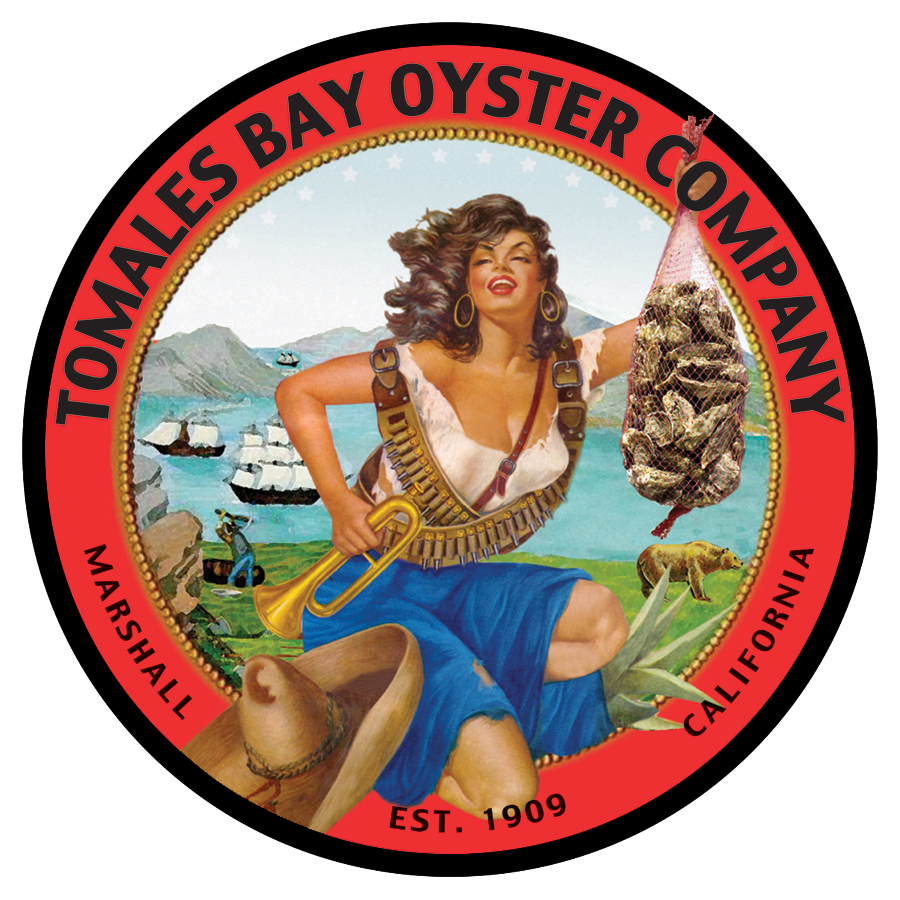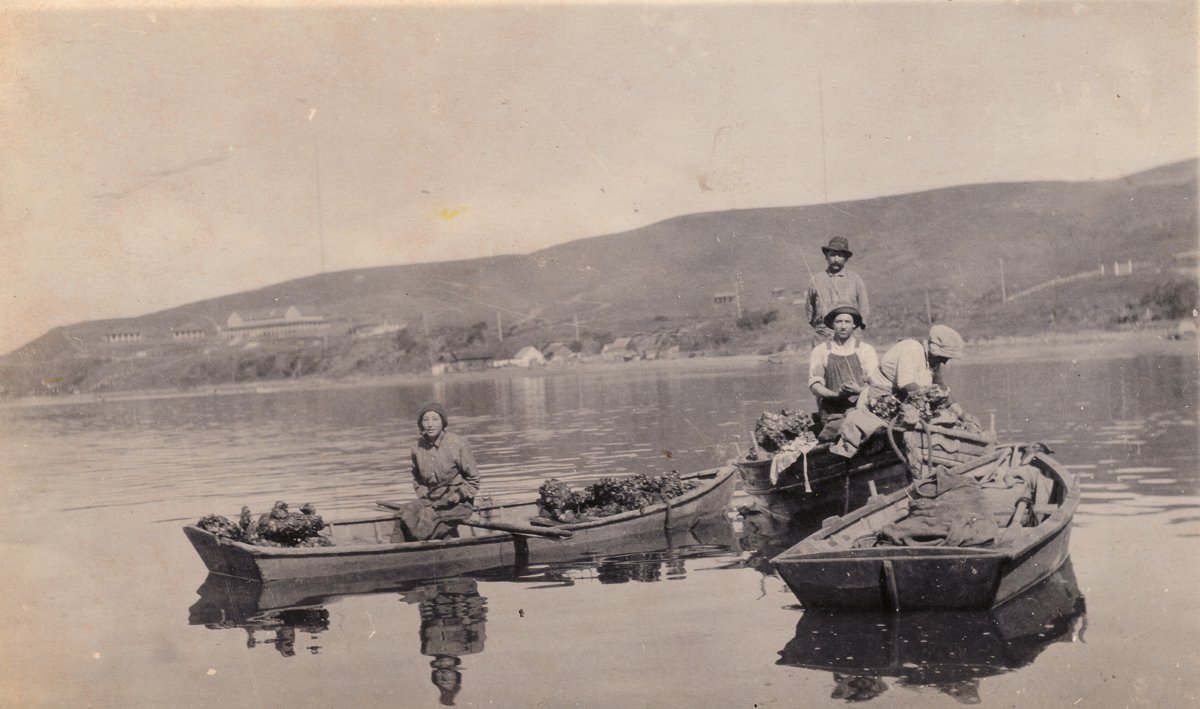
Established in 1909, we are California’s oldest continuously run shellfish farm. The farm's history is deeply entwined with the story of oyster farming in the Bay area.
The Coastal Miwok are the earliest inhabitants of what is now the Point Reyes National Seashore and Tomales Bay. The Miwoks who lived here for centuries name Tomales Bay Tamal-Liwa. The small, native oysters called Oly’s or Olympias was a large part of their diet, as can be seen in the many middens found throughout the area. When Sir Francis Drake sailed into Drakes Bay in 1579, Chaplain Fletcher made the first European record of the coast Miwok. In the mid to late 1800s, many Miwok who survived the Spanish Missions returned to their ancestral lands, settling along the bay and working as oyster farmers, fishermen, and ranchers.
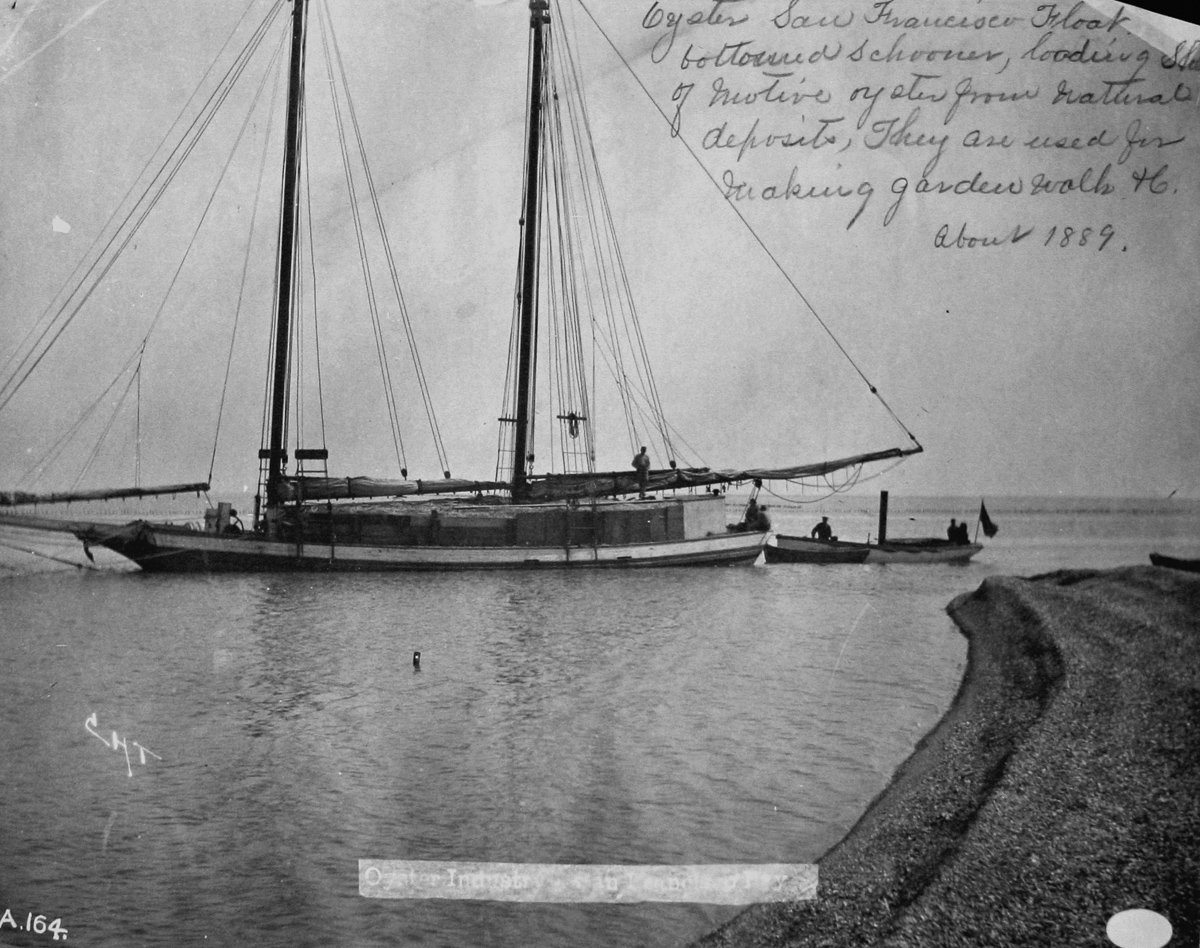
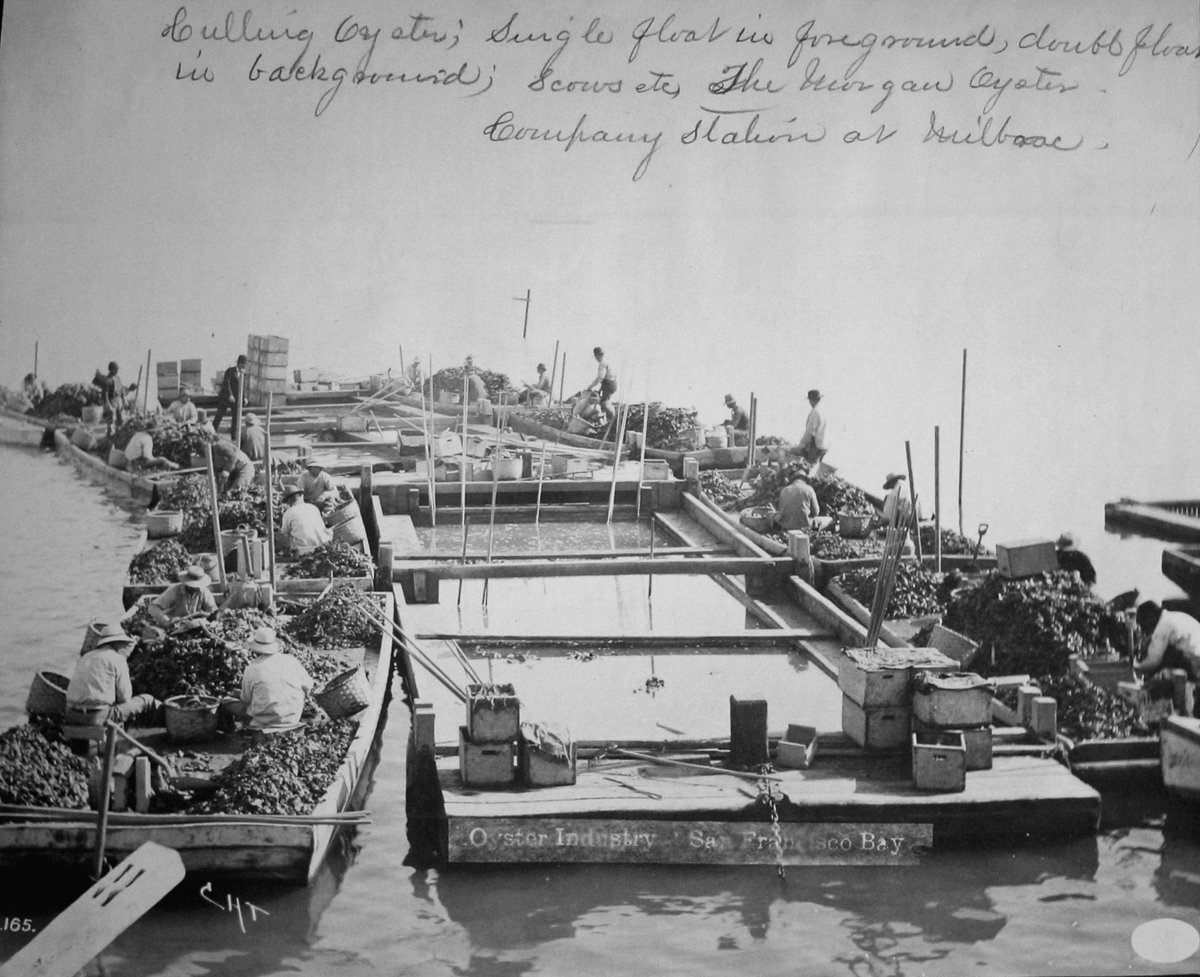
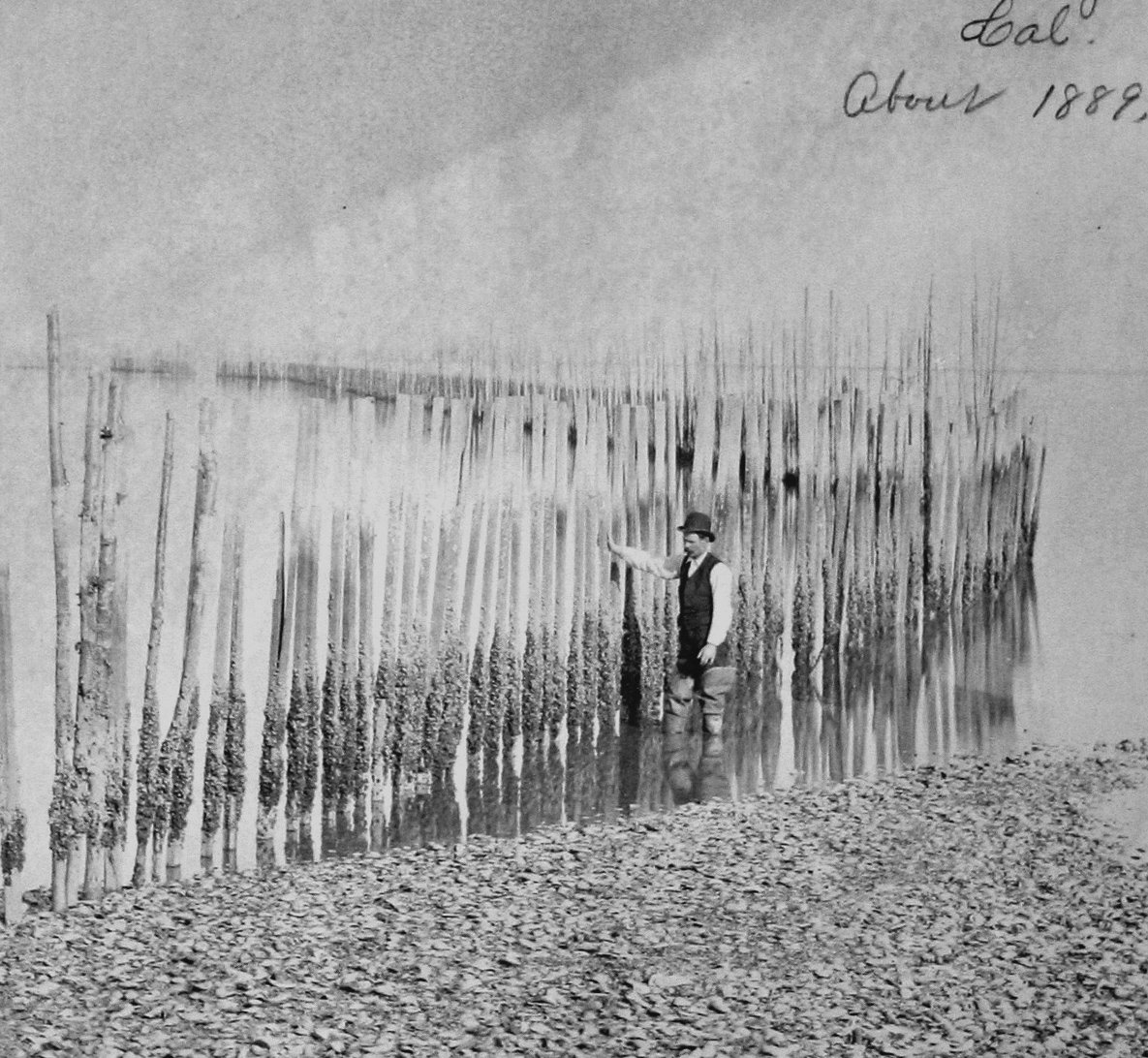
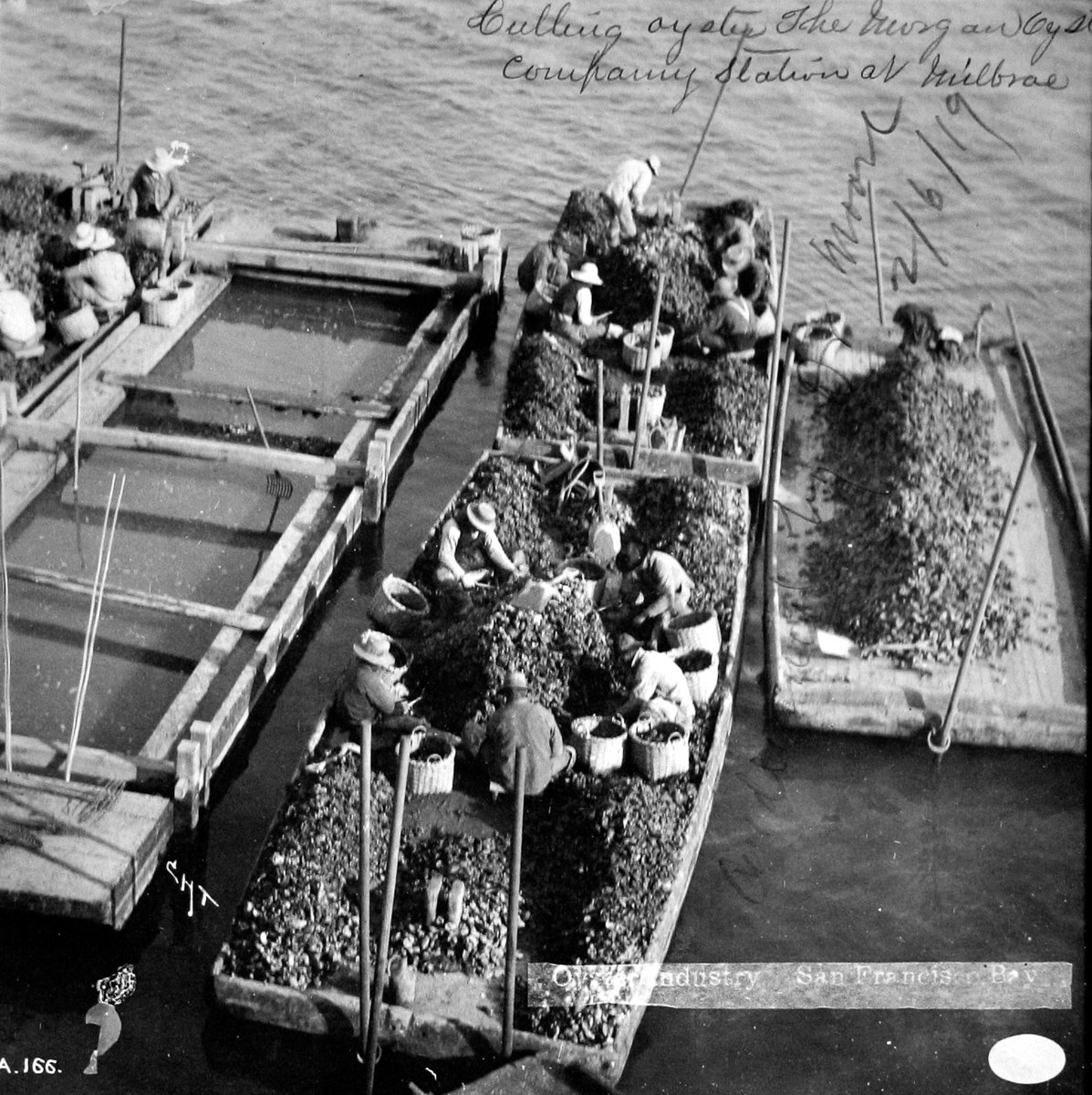
Oysters and the Gold Rush
In the 1860s California’s Gold Rush causes a population explosion in San Francisco. New immigrants bring a taste for oysters as a source of affordable protein. However, the local California oyster is too small and with a coppery taste that does not appeal to consumer’s taste. To remedy this, oysters from Willapa Bay, Washington were transplanted into San Francisco Bay and the local industry grew.
The newly built transcontinental railway allows oyster farmers to import East coast Atlantic oysters seeds for cultivation in San Francisco Bay. Canneries are built and packaged products ship across the country. Canned oysters become an essential and affordable source of nourishment nationwide.
By the 1880s, the S.F bay area was ranked as the sixth-largest oyster producer in the nation. However, population growth harmed the marine environment and pollution threatened the oyster industry. A mass die-off prompts the United States Fish Commission (USFC) to research oyster cultivation elsewhere.
Tomales Bay is considered as an alternative growing region because it is near the city and has clean estuarine waters. According to a National Park Service draft of “Tomales Bay Environmental History,” by Terry Weinard, the first Tomales Bay oyster beds were sown near Millerton Point in 1875.
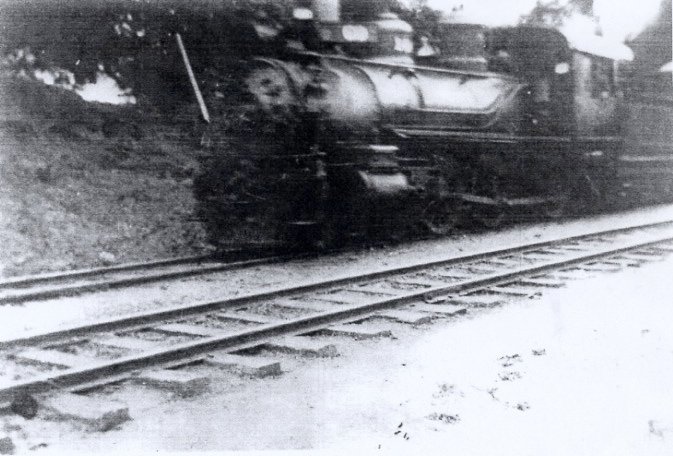
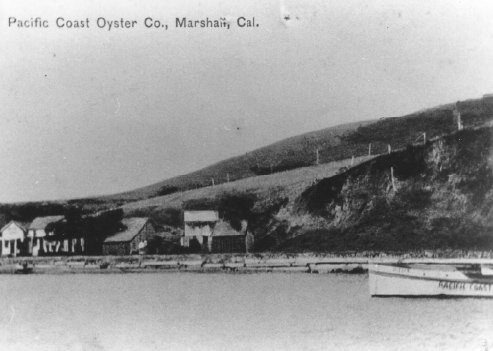
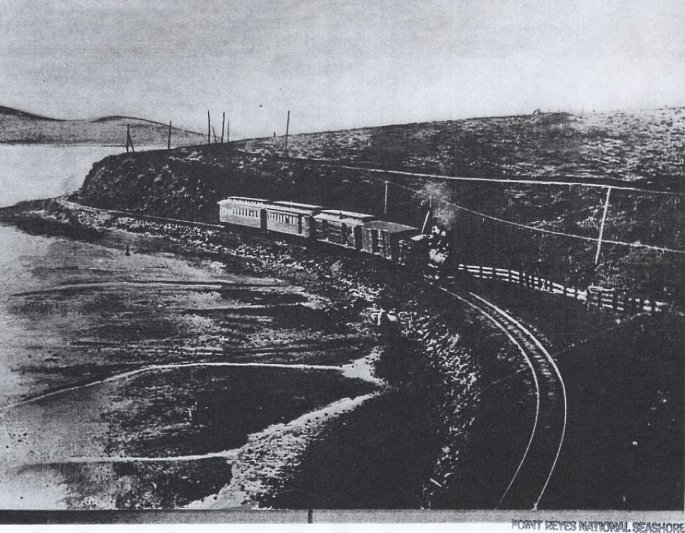
Beginning of TBOC and the West Marin Oyster industry
The North Pacific Coast Railroad, completed in 1875 helped to transport lumber and dairy from the Russian River in West Sonoma to San Francisco. The railroad provided essential transport to and from the Tomales Bay area. By the early 1900s more oyster farms appear on the east shore of the Tomales Bay. These inlcude: Eli Gordon’s Pacific Coast Oyster Company (PCOC) at Bivalve in 1907, the Morgan Oyster Company near Millerton Point in 1909, and the Gilbert Oyster Company also near Millerton Point in 1910.
In 1907 Eli Gordon of the Pacific Coast Oyster Company from San Francisco established oyster beds in Tomales Bay. The company developed its oyster beds, planting approximately 450 acres with imported oyster seed from the east coast and opening the ‘Bivalve Station on the NorthPacific Coast Railroad line .
In 1909 the Tomales Bay Oyster Company was founded when Pacific Coast Oyster Company purchased Morgan’s Tomales Bay holdings and rename it Tomales Bay Oyster Company.
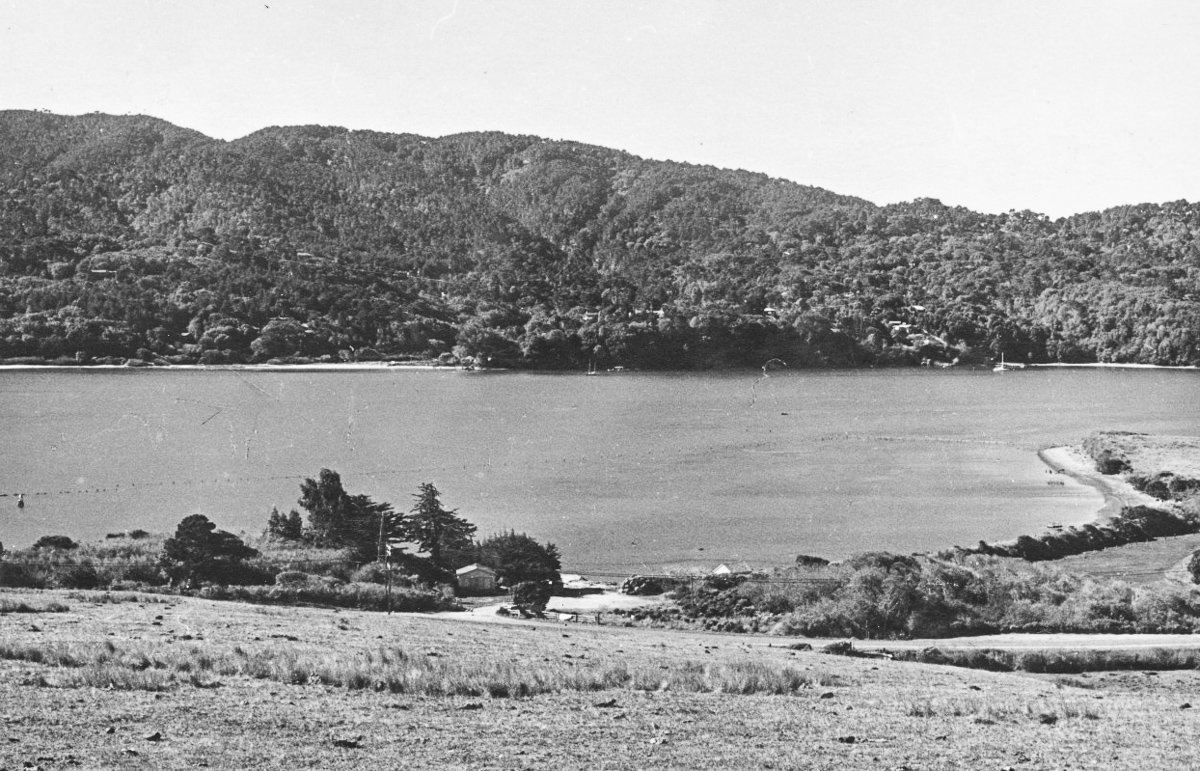
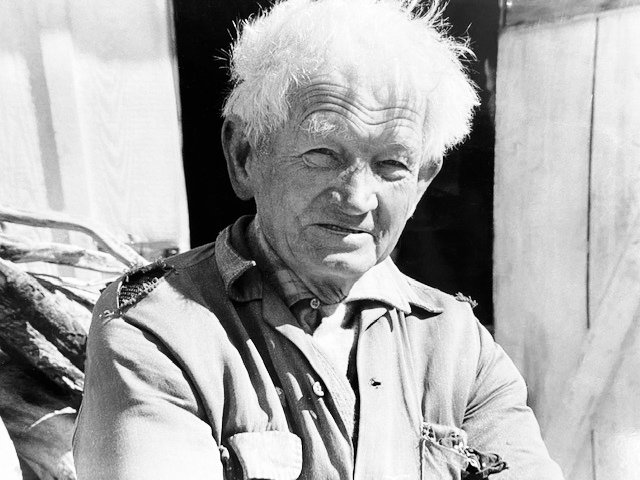
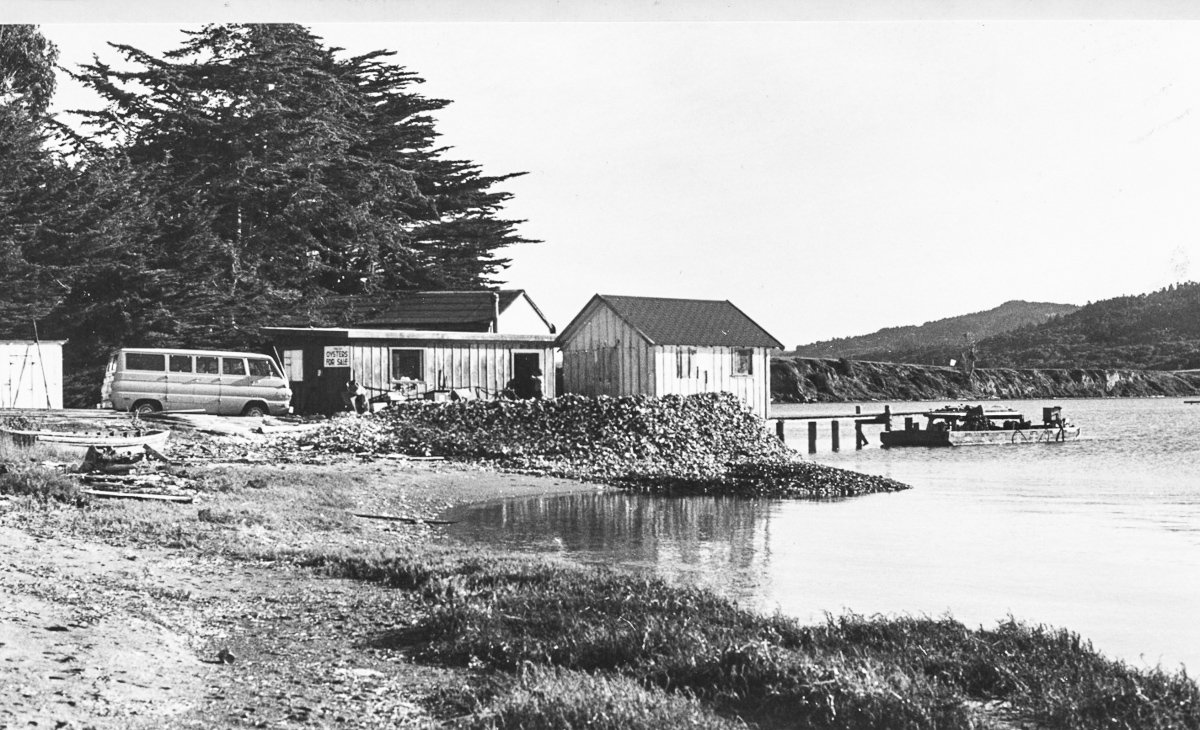
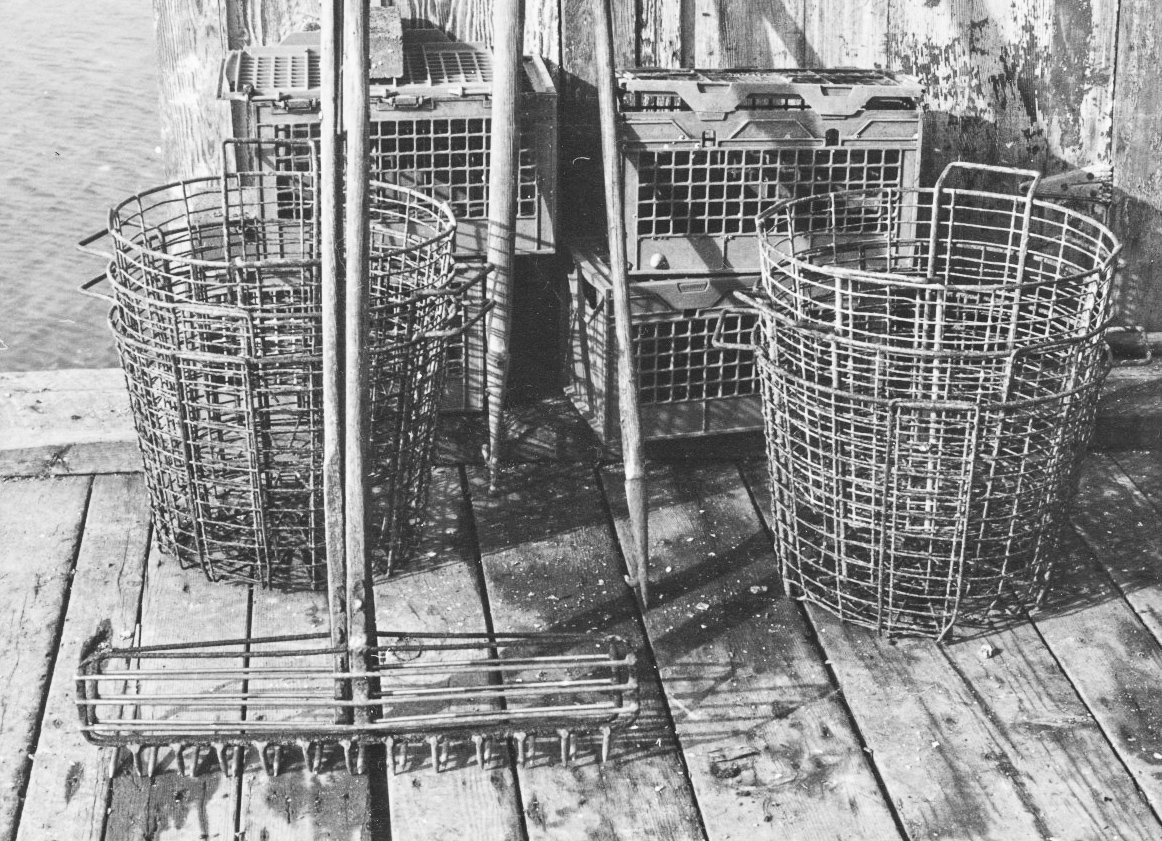
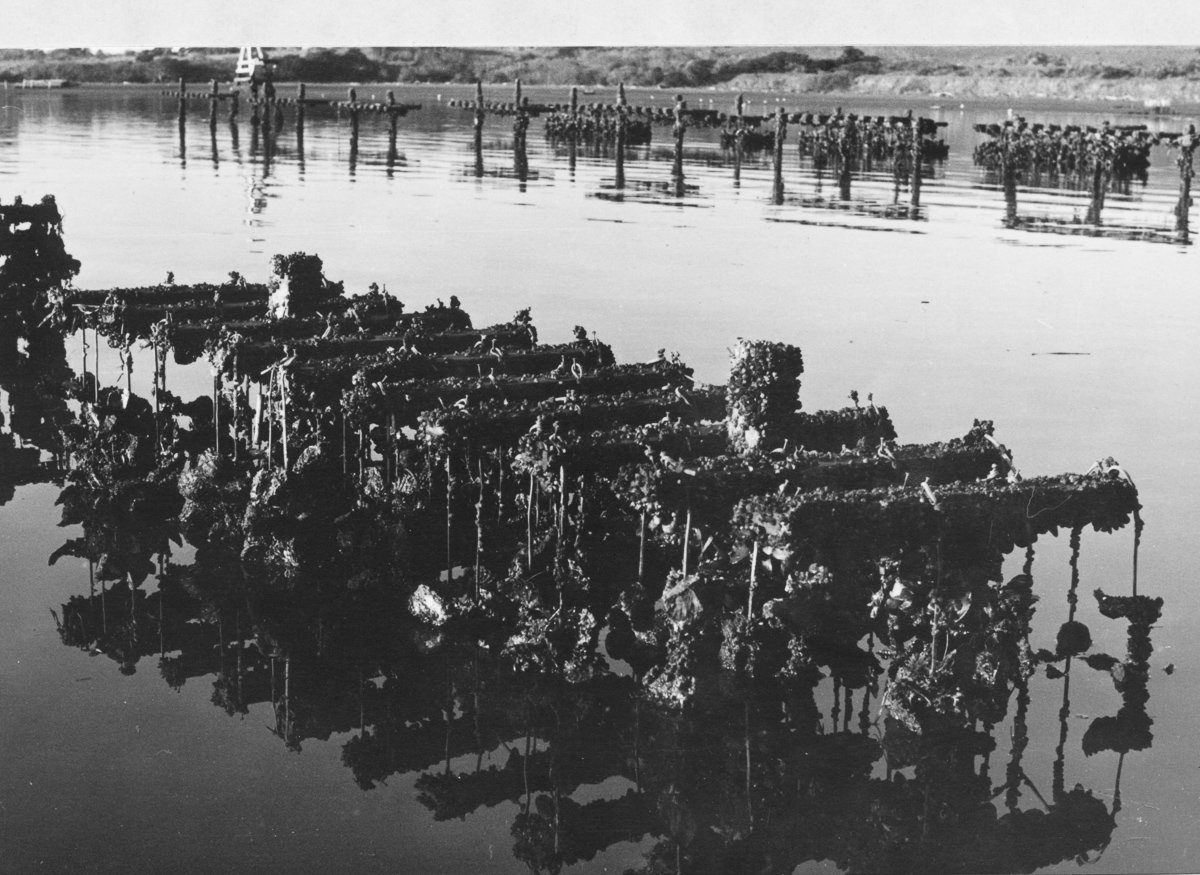
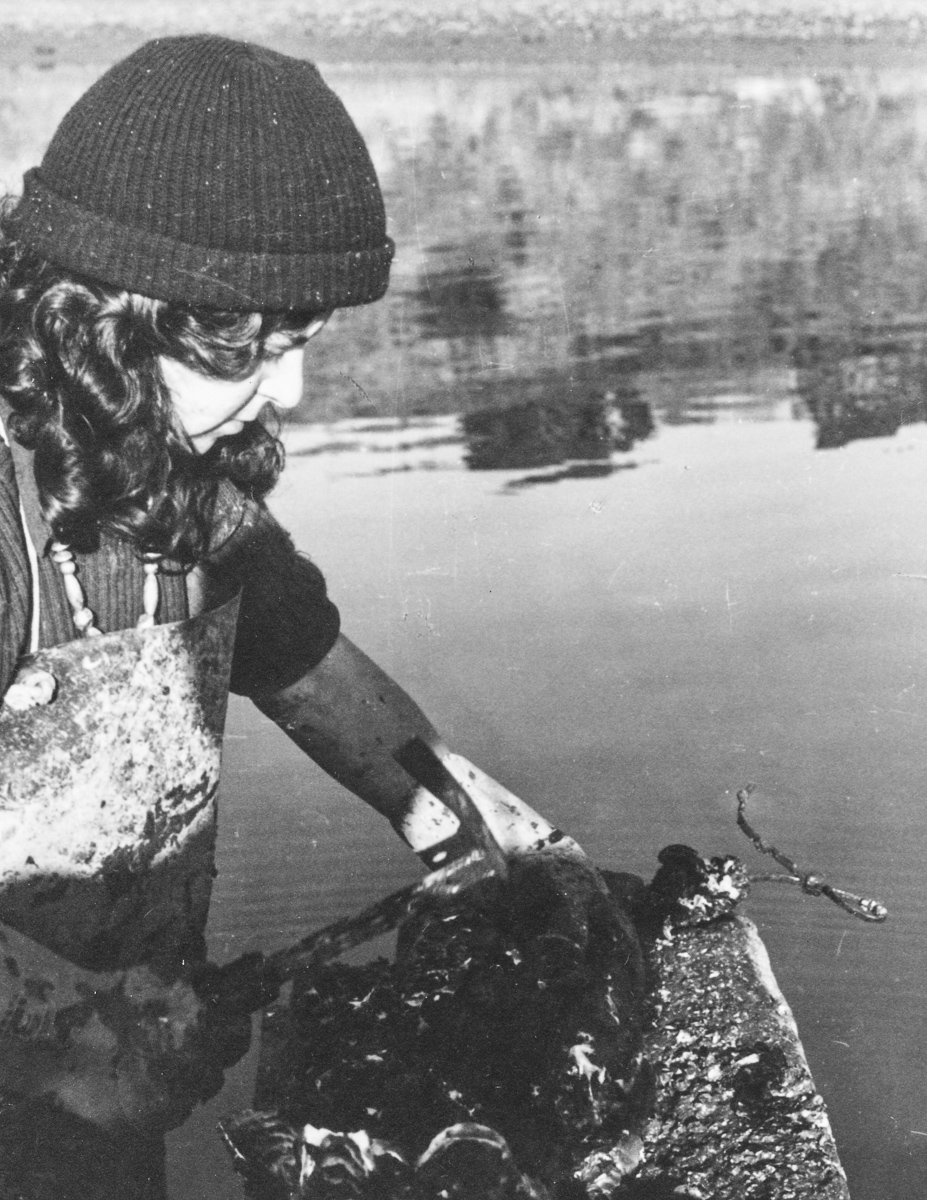

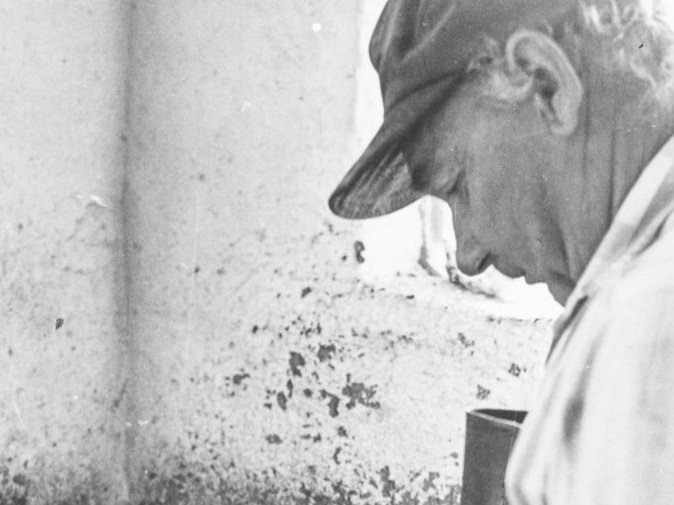
1920-1969
Between late 1920 and 1957 Tomales Bay Oyster Company is owned by Mr Gres and managed by Oscar Johannson. In 1928 the California Department of Fish and Game partners with TBOC to introduce the Pacific oyster from Japan to Tomales Bay. After several years of trial and error, TBOC produces an exceptional oyster that grows in popularity to become the West Coast standard.
Oscar Johannson, his wife Jean, and his son Edward work for TBOC from 1926 until 1988. Johannson manages growing operations and eventually becomes the owner, I believe in the 50s. They had an oyster fence that was 7 miles long that ran from north of the current oyster company, south to Bivalve (around the Millerton area). The oyster fence kept the bat rays out of the oyster growing area. Bat rays will eat up your whole farm if you're not careful! At that time they would rake and tong the oysters onto a boat or barge.
1969-2009
Gordon Sanford and Ruth Sanford lease the oyster beds from 1969 through 1976 from Oscar Johansen. The Sanford operate the business as a family with mom, dad, and four kids working together. The price of oysters then was .75 cents per dozen in the shell.
1977: American shellfish company lease the farm from Oscar Johansen and they experiment successfully with clutchless oyster raising or the growing of a singular oyster instead of clusters.
1988: Bill Wilson bought the company. He was the first to put in wet holding tanks with UV and sand filters. Wilson’s growing methods were rack and bag and stake and sock. Drew Alden is the manager and eventually buys the company from Bill.
1989- 2009: Drew Alden owns and operates TBOC. He creates the tip bag which shapes oysters into a beautiful cup shape that Alden names the Golden Nugget.
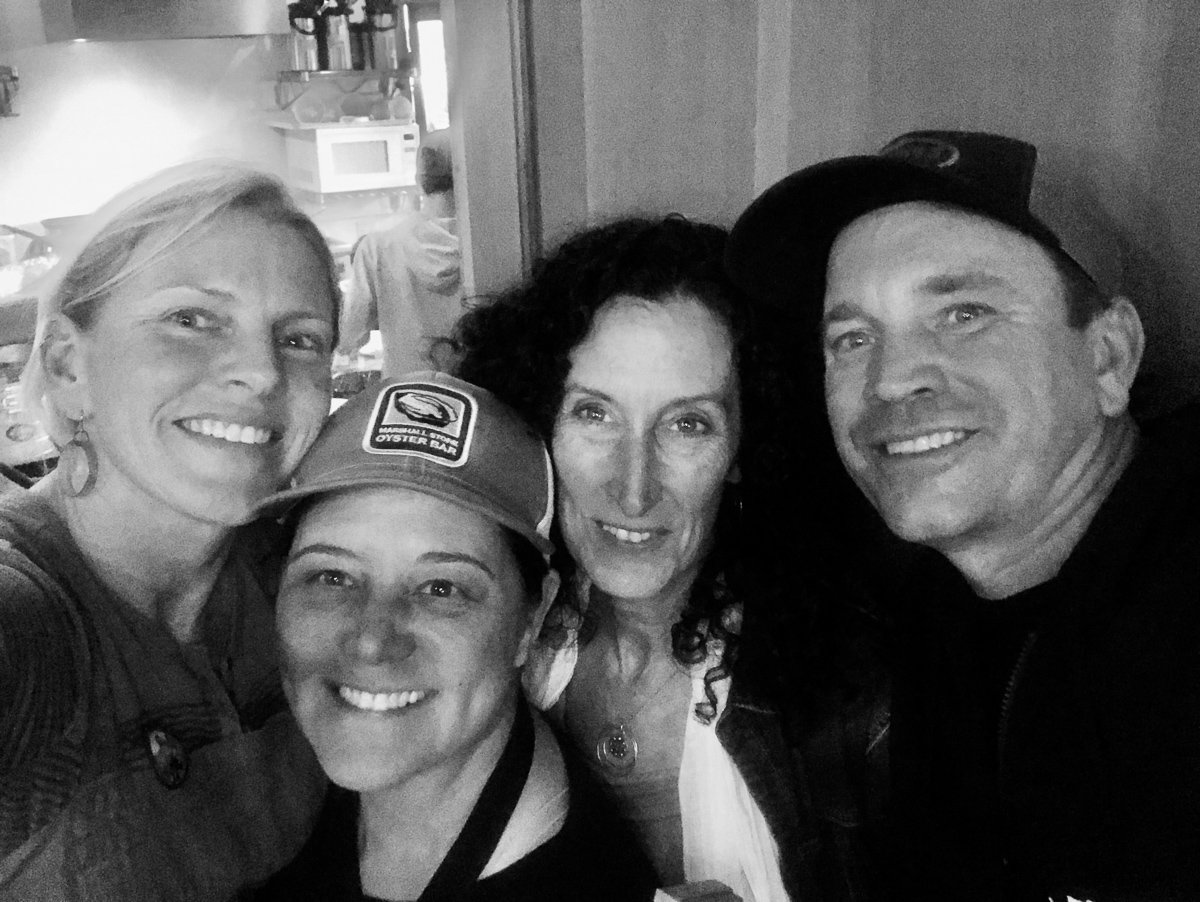
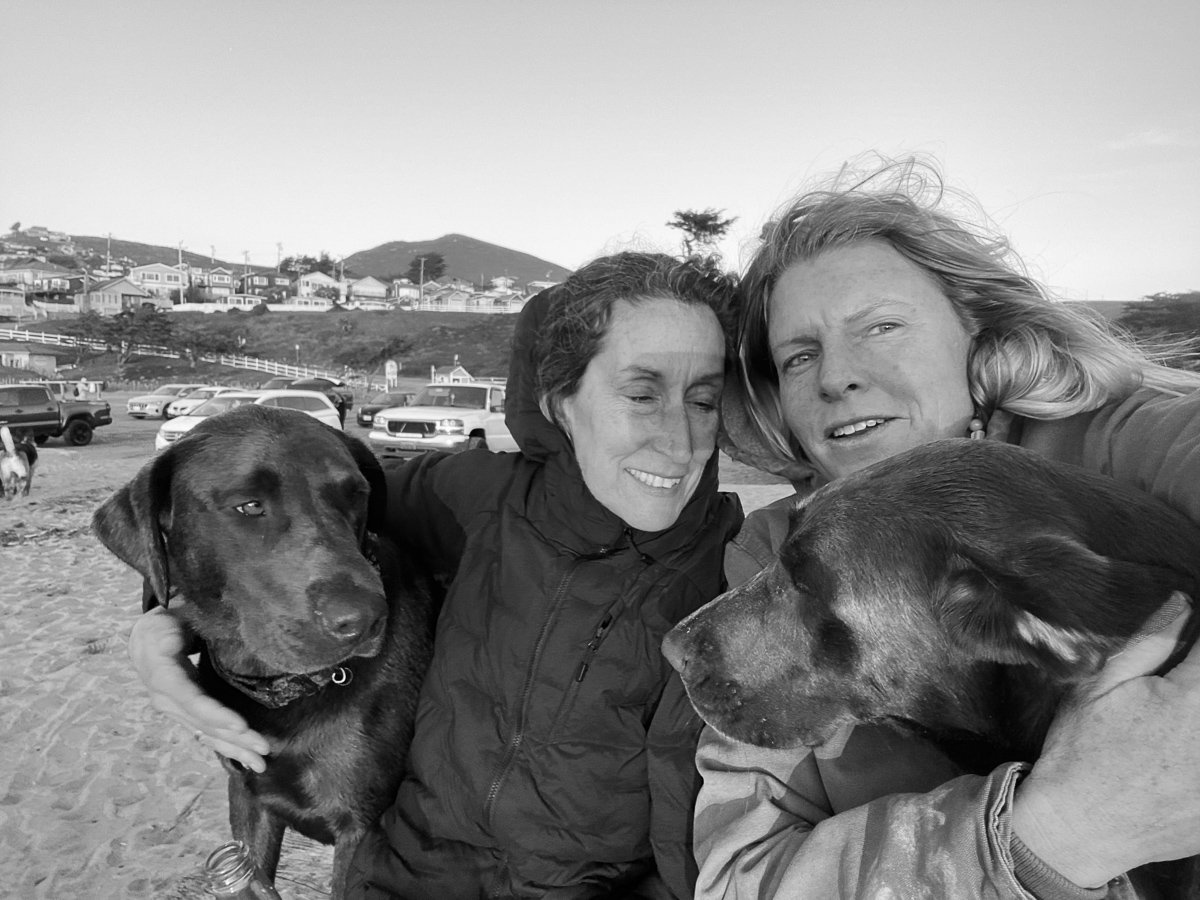
2009 - today
Tod (Charles) Friend bought TBOC in 2009 with the help of friends and family. He revamped the oyster company and enhanced the picnic area for visitors to enjoy oysters on the bay. He cleaned up old legacy gear from past farmers and perfected the floating farm method. Tod added his 61-acre lease at the North of the Bay to TBOC’S growing area.TBOC was his Moby Dick, his white whale, his dream in the flesh to own his own oyster company after working so hard. In 2017, tragically and heartbreaking, Tod had a boating accident on the bay and he didn’t make it home.
Heidi Gregory and Cathryn Irving took over Tomales Bay Oyster Company in 2017. Most of the same farming crew that worked with Tod are still here. We carry on with the spirit of Tod who taught us how. Cathryn is part of the family and has worked with The Marshall Store, TBOC, and Indian Peach since the beginning.
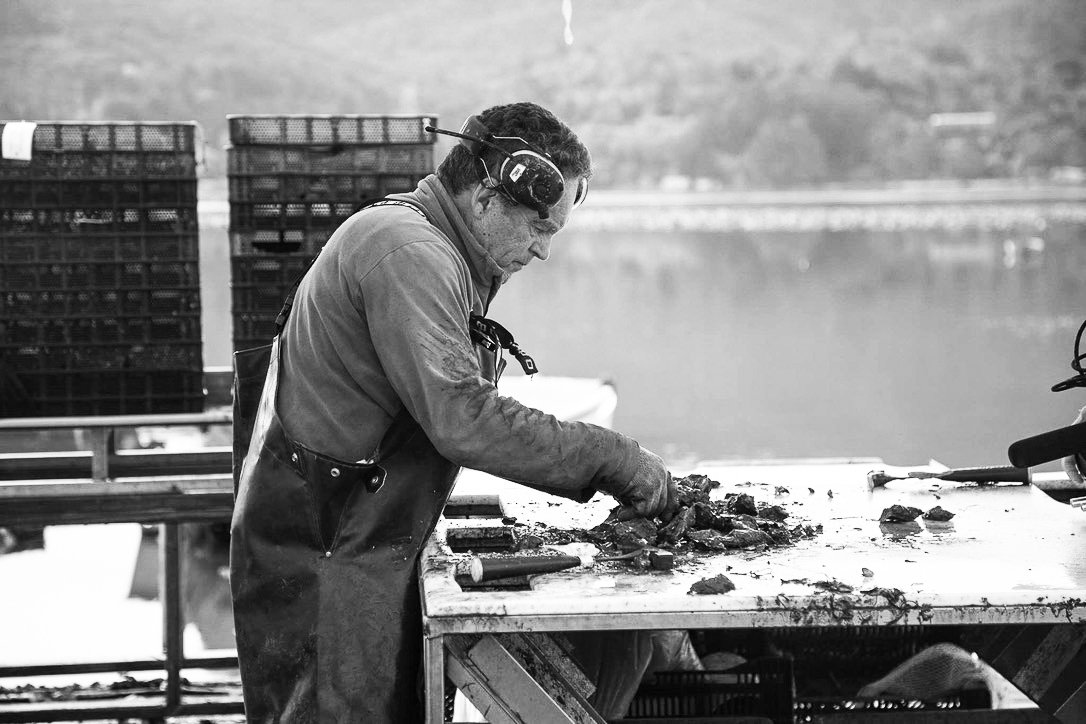
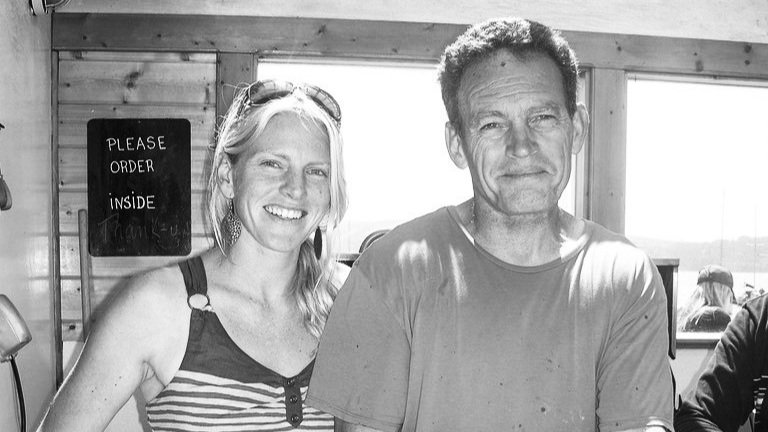
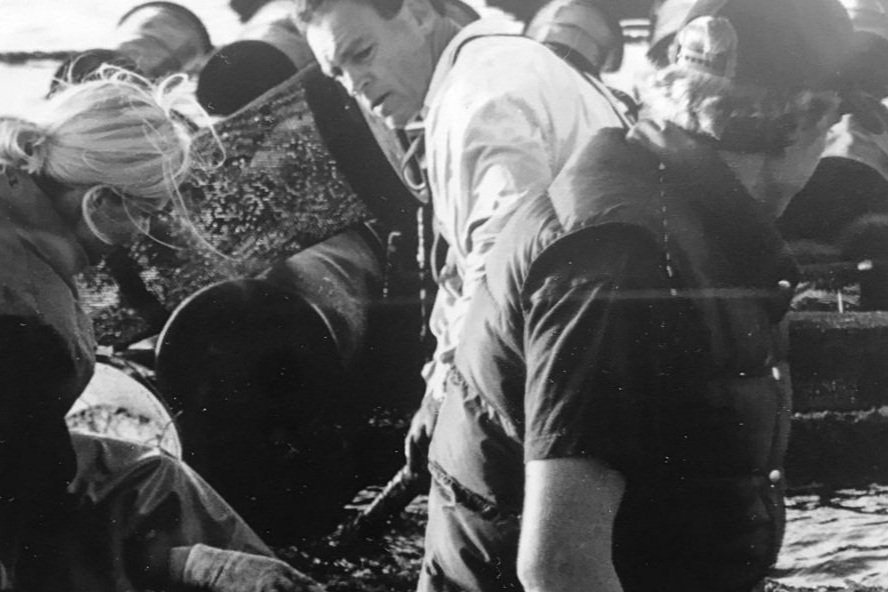
Charles Tod Friend
Tod started his oyster farming career in 1990, with Hog Island Oyster Company. He worked on the farming crew and at the retail shack. In 1998 he bought his first lease, 61 acres on Tomales Bay. Tod was at home as an oyster farmer and enjoyed living by the tide and the moon, harvesting the fruits of the ocean that he tended.
Tod's children Heidi, Shannon, and Kim grew up in Marshall but left at a young age. When Heidi and Shannon moved back to the USA they worked at Hog Island’s Marshall farm and Ferry Building location and shucked for the traveling oyster bars. In between regular jobs, they farmed with Tod on his lease. Kim had her own catering business and Tod spent many a night washing dishes at her events. Tod sold his oysters to Hog Island, The Marshall Store, Tony’s Seafood, Tomales Bay Oyster Company, and some restaurants in Oakland near where he lived.
In 2006 Tod bought and ran the Marshall Store with his family and could now sell their oysters without a middleman. Tod gave The Marshall Store to his children when he bought TBOC for all their hard work and dedication to working with him. Today Shannon runs The Marshall Store, Kim runs Indian Peach catering and Heidi runs the oyster farm.
In 2017, tragically and heartbreaking, Tod had a boating accident on the bay and he didn’t make it home. He was genuine, kind, salt of the earth, charming, passionate, political, radical, a fighter, and a lover. He touched a lot of people's hearts. We all miss him dearly!
Mother nature is our god and she rules us.
If there is any history that you know of that is missing or if you have another version of this history please get in touch. This is an ongoing compilation of local history and many stories come from the people who lived and worked here.
